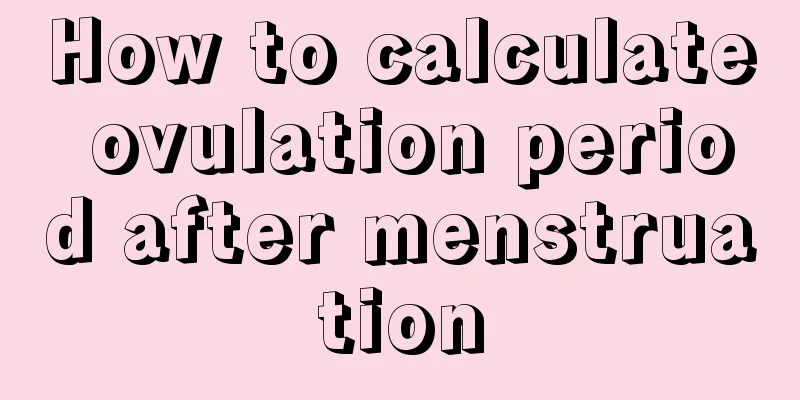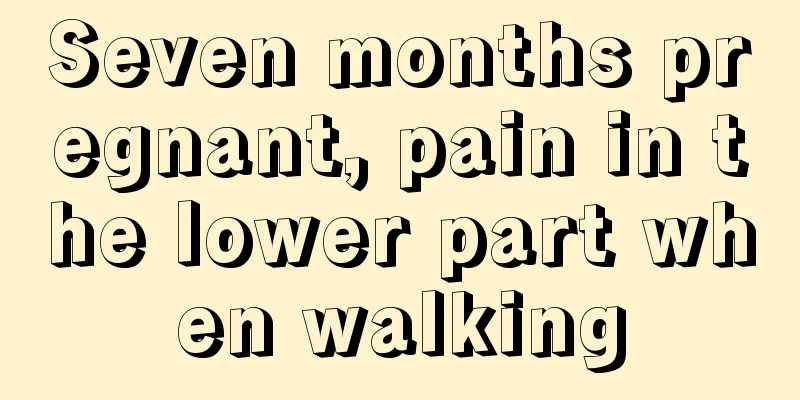How to calculate ovulation period after menstruation

|
Menstruation can reflect a woman's physical health. After menstruation, there will be ovulation. Women only ovulate one egg cell every month, so the ovulation period is very important for women. Only during the ovulation period can you get pregnant. Friends who want to get pregnant must calculate their ovulation period. Here we introduce how to calculate the ovulation period after menstruation. 1. Generally, the ovulation period is counted from the first day of the menstrual period, and counts back to the 14th to 16th day. After the egg is released from the ovary, it can survive in the fallopian tube for 1-2 days, waiting for fertilization. The male's sperm can maintain its vitality for 2-3 days in the female's reproductive tract, so it is easy to get pregnant by having sexual intercourse a few days before and after the egg is released. To be on the safe side, we call the 5 days before and 4 days after ovulation, together with the ovulation day, a total of 10 days, the ovulation period. 2. The whole period is the seven days before and eight days after the menstrual period. However, this is just a general rule. Generally speaking, the safe period before ovulation is 7 days, and the safe period after ovulation is 8 days. If your menstrual cycle has been 28 days for a long time, you can treat it according to the first seven and the last eight, because this will avoid the 10-day dangerous period. 3. For a woman who often has short cycles, such as a 21-day cycle, the ovulation day is probably on the 7th day. At this time, there is no safe period before ovulation, because the minimum reserved period before ovulation may occur at any time just after the menstruation ends. For such women, there may be a risk of pregnancy even if their menstruation has just ended. 4. For a woman who often has a long cycle, such as a cycle of 35 days, the ovulation day is probably on the 21st day. The delayed ovulation at this time makes it impossible to determine the safe period after ovulation. 5. The method of calculating the ovulation period is: start counting from the first day of the next menstruation, and count down 14 days or subtract 14 days, which is the normal ovulation day of women. Then add the ovulation day and the 5 days before and 4 days after it together, which is called the female ovulation period. If female friends want to get pregnant as soon as possible, they must clearly calculate their ovulation period. Only in this way can they conceive and have a baby normally. The above is the calculation method for the ovulation period after menstruation. For a woman, only after mastering the correct calculation method can she successfully conceive. The ovulation period can also effectively avoid pregnancy. If you don’t want a child, you must avoid the ovulation period. Therefore, this has great practical value for women. |
<<: What is the ovulation algorithm after menstruation?
>>: What is the cause of dark red menstruation?
Recommend
4 steps to solve fever in pregnant women
Pregnant women are the most important protection ...
What are the reasons for a month late menstruation?
Menstruation is a headache for many women. Someti...
Will inserting soda tablets into the vagina reduce inflammation?
In life, many couples hope to have a boy when the...
The efficacy and function of Penyanjing granules
The use of the medicine Penyanjing Granules is ve...
Why is there always water flowing from a woman's vagina?
A woman's body will undergo a series of chang...
Can I have surgery while pregnant?
Pregnancy is a special period for women. They nee...
Is it possible to conceive naturally at the age of 47?
The success rate of pregnancy is related to many ...
Should I take DHA during breastfeeding?
Everyone knows that the nutrients that breastfeed...
How long after giving birth can I have liposuction?
A very common worry for mothers after giving birt...
Can women eat red dates during menstruation?
Female friends will feel uncomfortable for a few ...
Swelling belly in early pregnancy
In the early stages of pregnancy, a woman's a...
What are the common causes of ear congestion and tinnitus? Problems with the outer, middle or inner ear can cause it!
Author: Li Xiaoting, attending physician, Beijing...
At how many weeks of gestation does the fetus enter the pelvis?
At how many weeks of pregnancy does the fetus ent...
Does losing weight before pregnancy have any effect?
Doctors say that if your daily diet is nutritious...
What are the benefits of drinking mutton soup during the dog days? Will drinking mutton soup during the dog days cause internal heat?
The weather in the dog days is relatively hot, an...









